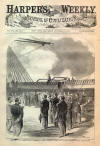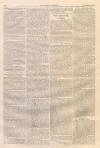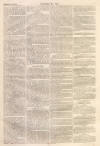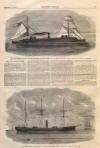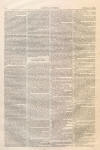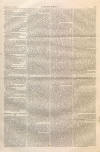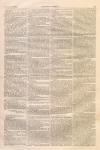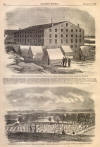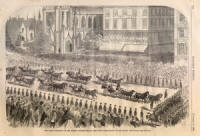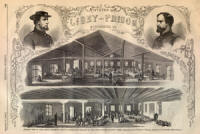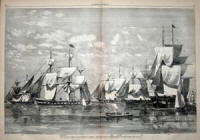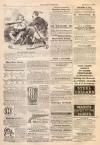Confederate Rams
|
|
This Site:
|
OCTOBER 17, 1863.] HARPER'S WEEKLY. 661 THE ANGLO-REBEL PIRATES—STEAM-RAM BUILDING FOR THE REBELS IN THE CLYDE, SCOTLAND.—[FROM A SKETCH BY AN AMERICAN IN ENGLAND.]THE ANGLO-REBEL RAMS.THE picture of one of LAIRD'S ANGLO-REBEL RAMS, which we give below, is from a drawing obtained by some patriotic citizens who were lately in England. They smuggled an artist into the yard in which this unscrupulous knave, Laird, is building his pirates, and succeeded in getting a pretty thorough picture. Both vessels are alike. A correspondent of the Providence Journal thus describes them: In company with an intelligent and experienced ship-master we crossed the "Tranmere Ferry," and arrived at the yard at 10 1/2 A.M. The "ram" on the stocks was of the same dimensions as the one previously built. In length about two hundred and fifty feet, forty feet beam, and twenty feet depth of hold, as near as could be judged by the eye. The "stem" is of oiled iron, about six or eight inches thick and twelve or fifteen wide. The bottom is flat, with a slight keel, and the screw as usual, but protected in the conformation of the stern. The "ram" is a projection of solid steel, of the same thickness as the stem, and from six to eight feet beyond this perpendicular line, resembling more nearly in form an inverted nose. When the vessel floats this formidable appendage is below the water-line and invisible. As the clock struck eleven the last block was "knocked from under," and the vessel moved steadily and gracefully into the water. The English ensign was flying from a spar at the "stern-post," and as the hull left the shed the "French" colors were raised at the stem. The momentum acquired carried the vessel nearly across the Mersey, where it was taken in tow by steam-tugs and brought into dock, beside the first built. There were several ladies and gentlemen on the launch, friends of the builders, and doubtless many representatives of the so-called "Confederacy," citizens and sympathizers. The other "ram" had her iron masts, spars, and rigging in place. The masts are tubular, and the top-masts intended to be inclosed as a spy-glass. The forecastle and poop-deck are of boiler-iron, and are calculated and arranged for being shot assay in action. "The bulwarks are hung with heavy strap hinges, intended to be lowered in action, so as to give clean, flush decks, and to facilitate the boarding of an adversary. There are two turrets or towers, about twenty feet in diameter and ten in height. They are placed partly above and below decks; are pierced for two heavy guns each, entered below decks through six man-holes; they are built of very heavy boiler iron on the outside and inside, and to be tilled in with a foot's thickness of wood or some more resisting material. They revolve on twenty-four wheels (similar to the small wheels of a locomotive, radiating from a centre), on axles of wrought iron, to the circle of the diameter of the turrets. The top of the turrets (and deck) is protected by thick iron. One of them is in the rear of the foremast, the other of the mainmast. Between the forward turret and smoke-funnel is the pilot-house, of an octagonal form (if as the model of wood in place), pierced with small sight-holes, and overlooking the turrets. What the arrangements may be for directing the movements of the vessel was not ascertained, as no one except workmen were allowed on board, and the small size of the pilot-house would hardly admit of a wheel on it. Each vessel has a powerful engine of between 300 and 400 horse-power. The hull of the 'ram' nearest completion is first of heavy iron 1 inch in thickness, then a planking of teak-wood 9 inches, and an outer covering of iron plating of 4 1/2 inches thickness. But so well finished is this work that there is no indication of the thickness or strength visible. The tonnage of each must be nearly two thousand tons, and the armament for the turrets was not the only ordnance to be carried on deck. These vessels are of so peculiar a model and construction that I expressed confidently the opinion that under no subterfuge of reasoning or pretext could they be allowed to depart on their intended mission of destruction. The French and English colors were at 'masthead' on this latter vessel also. It was stated that they were for the French Government, but a card from the French Consul denied the rumor. Afterward it was announced that the funds for their construction were furnished by M. Sangier, a French banker, who has a mortgage upon both vessels. The objection that they are unseaworthy seems futile, as the weight of the turrets and machinery is principally below decks. Such an objection certainly was not expressed by my very intelligent companion." The picture above was likewise taken surreptitiously by an American, who brought it here. The vessel represented is building in the Clyde, and if she gets to sea will be very formidable. OUR RUSSIAN VISITORS.WE devote considerable space this week to illustrations of the grand reception given last week to our distinguished Russian visitors. The ceremony was intended to have, and had, a political significance. No notice whatever was taken of the fleets of the British and French admirals lying in the Bay. But every citizen felt bound to do what in him lay to testify to the Russians our sense of gratitude for the friendly manner in which Russia has stood by us in our present struggle, while the Western Powers have done not a little to work our ruin. On pages 664 and 665 we give a general view of LISOVSKI'S FLEET.This consists of the flag-ship Alexander Nevski, screw frigate of 51 guns, 4500 tons, Captain Fedorovski; the screw frigate Peresvet, 48 guns, 3800 tons, Captain Kopytov; screw frigate 0sliaba, 33 (Next Page) THE ANGLO-REBEL PIRATES—ONE OF LAIRD'S STEAM-RAMS.—[FROM A SKETCH BY AN AMERICAN IN ENGLAND.]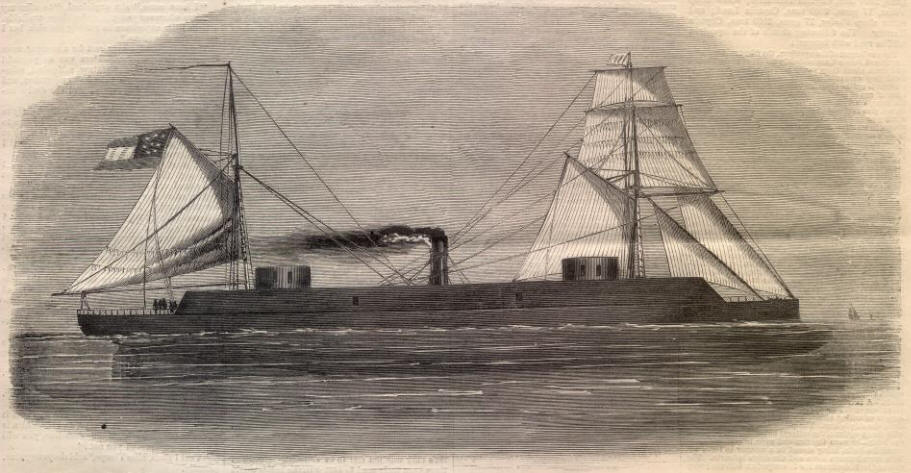 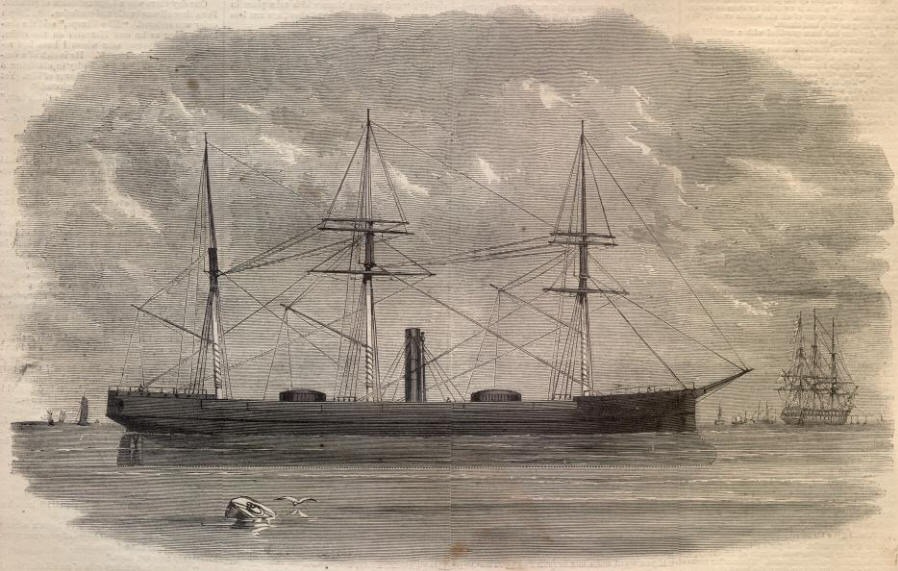 |
||||||||||||||||||||||
|
|
||
|
|
Site Copyright 2003-2018 Son of the South. For Questions or comments about this collection, contact paul@sonofthesouth.net |
|
|
Are you Scared and Confused? Read My Snake Story, a story of hope and encouragement, to help you face your fears. |
||
